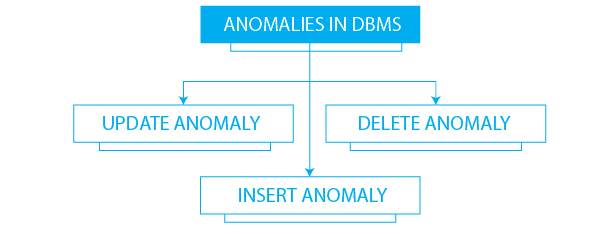In the realm of database management, ensuring data integrity and consistency is of paramount importance. Databases are designed to store, organize, and retrieve data efficiently. However, there are instances where data inconsistencies and anomalies can occur, leading to incorrect or unexpected results. These anomalies pose significant challenges to the reliability and accuracy of the data stored within a database.
In this article, we delve into the world of anomalies in Database Management Systems (DBMS). We explore the different types of anomalies that can arise, understand their causes, and discuss strategies to mitigate and prevent them. By understanding these anomalies and their implications, database administrators, developers, and users can take proactive measures to maintain data integrity and enhance the reliability of their systems.
We will begin by examining the three primary types of anomalies that commonly occur in DBMS: insertion anomalies, deletion anomalies, and update anomalies. These anomalies can arise due to various factors such as improper database design, incomplete or inconsistent data entries, or inadequate data manipulation operations. We will explore real-world examples to illustrate these anomalies and highlight their impact on data consistency and reliability.
What are Anomalies in DBMS?
Anomalies in dbms can be defined as the flaws or problems in the relational database that can be occurred by the operations such as some instances of insertion leading to insertion anomalies in dbms, deleting rows that can lead to deletion anomalies in dbms.
In today’s completely data-dependent society, database management systems are a crucial tool for the storage, retrieval, and modification of data. However, as the number of tuples or rows in the data increases, so do the anomalies.
Thus, as categories of anomalies in dbms depicted in the aforementioned table, anomalies are the discrepancies that arise in the table when doing any of the three operations, update, insert, or delete.
Insertion Anomaly
When talking about anomalies in dbms, it’s important to understand that anomalies are relational discrepancies. In this section, Insertion Anomalies in DBMS are defined along with pertinent real-world examples.
When putting data into the table, DBMS insert anomalies occur. Some common instances of these anomalies involve poor data management or missing attributes. For instance, let’s say a student enrols in an engineering college and chooses not to create an enrollment number or even a department. If this happens, adding the student will result in an error unless the database administrator has permitted students to enter NULL as their enrollment number.
Example of Insertion Anomalies in DBMS
Suppose you have a database table named "Engineers" with columns for "S. No", "Name", "Department", and "Enrollment No” with the table mentioned as follows:-
Table Name: Engineers
| S. No | Name | Department | Enrollment No |
|---|---|---|---|
| 1 | Vijay | CSE | 1234567 |
| 2 | Manish | IT | 1234568 |
| 3 | Sid | ECE | 1234569 |
Even if you attempt to insert a new record without providing the Department, you will encounter an insertion anomaly since the database won’t let you leave the "Department" field empty. Say, for example, that you wish to include John as a new student on the roster but you are unsure about their Department. You would need to create a new department to the "Departments" table before adding the new student to the "Engineers" chart in order to avoid the issue.
Updation Anomaly
Update anomalies, which happen when updates are made to the data in one table but do not show up in another table, are another sort of anomaly that can happen in databases. This is due to the interdependence of data from many tables that are referred to in other tables.
A foreign key is used to refer to the customer information in the order details database when an online business has two tables, one for customer information and the other for order details. To create inconsistencies, or what is known as an update anomaly in DBMS, a customer’s name must be changed in the customer table even while the prior name already existed in the record with order details.
Example of Updation Anomalies in DBMS
Suppose you have a database table named "Customers" with columns for "ID" "Name" and “Email”,
Table Name: Customers
| ID | Name | |
|---|---|---|
| 1 | Alice | alice1@ok.com |
| 2 | Bob | bob2@ok.com |
| 3 | Charles | charles3@ok.com |
And a table named “Orders” with columns for “ID”, “Customer ID”, “Order Date” and “Order Total” with the tables mentioned as follows:-
Table Name: Orders
| ID | Customer ID | Order Date | Order Total |
|---|---|---|---|
| 1 | 1 | 15-02-2023 | 1000 |
| 2 | 1 | 16-02-2023 | 500 |
| 3 | 2 | 11-01-2023 | 600 |
| 4 | 3 | 12-01-2023 | 150 |
If the name of a customer changes in the Customers table but the Orders table still uses the previous name, you may still refer to the old name of the customer by using the Customer ID. Therefore, it is essential to build a database in such a way that tables are normalized and foreign keys are taken care of to guarantee referential integrity in the database in order to prevent update anomaly.
Deletion Anomaly
The third form of anomaly that might arise while deleting data from a table with a considerable amount of data loss is called a deletion anomaly in DBMS. The likelihood that the data is not normalized and not distributed among tables is high.
An e-commerce company might use a table, this time a customer table, to store all of the orders that are placed, but when an order is canceled, the order information must be removed, and since there is no other table to store customer information, that information will inevitably be deleted as well. To boost customer retention, we can divide the table into two, one containing the requested orders and the other containing the customer information.
Example of Deletion Anomalies in DBMS
Suppose you have a database table named "Products" with columns for "Product ID," "Name," "Description," "Quantity," and "Price." The table contains the following data:
Table Name: Products
| Product ID | Name | Description | Quantity | Price |
|---|---|---|---|---|
| 1 | Tablet | 128 GB | 2 | 20000 |
| 2 | Smartphone | 64 GB | 1 | 8000 |
| 3 | Notebook | 512 GB | 3 | 50000 |
Suppose you want to delete the "Notebook" product from the table for some reason. In that case, you will encounter a deletion anomaly because the table will lose descriptions about “Notebook” as well as its quantity, and price. To avoid the anomaly, you would need to move this information to a separate table to preserve the data for future uses.
Conclusion
Anomalies in Database Management Systems (DBMS) present significant challenges to the integrity and reliability of data stored within databases. Throughout this article, we have explored the various types of anomalies that can occur, including insertion anomalies, deletion anomalies, and update anomalies. We have examined their causes, consequences, and the potential impact they can have on data consistency.
It is evident that anomalies arise due to a range of factors, such as inadequate database design, incomplete or inconsistent data entries, and improper data manipulation operations. These anomalies can lead to incorrect or unexpected results, compromising the reliability and accuracy of the database.
However, the good news is that there are effective strategies and best practices that can be employed to mitigate and prevent anomalies. Proper database design principles, normalization techniques, and the enforcement of referential integrity constraints play a vital role in maintaining data consistency and minimizing the occurrence of anomalies.
FAQs Related to Anomalies in DBMS
Q1: What are anomalies in DBMS?
Anomalies in DBMS refer to inconsistencies and unexpected behaviors that can occur within a database system, leading to data integrity issues. These anomalies can manifest as insertion anomalies, deletion anomalies, or update anomalies, resulting in incorrect or unexpected data outcomes.
Q2: What is an insertion anomaly?
An insertion anomaly is a type of anomaly where inserting new data into a database leads to undesirable effects, such as the inability to insert a record due to missing attribute values or the duplication of data.
Q3: What is a deletion anomaly?
A deletion anomaly is an anomaly that occurs when removing data from a database results in unintended data loss. This can happen when deleting a record unintentionally removes associated data or causes the loss of necessary information.
Q4: What is an update anomaly?
An update anomaly is an anomaly that arises when modifying data in a database leads to inconsistencies. This can occur when updating one instance of a data item but unintentionally leaving other related instances unchanged, resulting in conflicting or contradictory information.
Q5: How can anomalies be prevented in DBMS?
Anomalies can be prevented in DBMS through proper database design and normalization techniques. By following principles such as identifying functional dependencies, applying normalization forms, and enforcing referential integrity constraints, it is possible to reduce the occurrence of anomalies and maintain data consistency.
Q6: What is normalization in DBMS?
Normalization is the process of organizing and structuring a database to eliminate redundancy and dependency issues. It involves breaking down data into smaller, well-defined entities and establishing relationships between them, ensuring data integrity and reducing the chances of anomalies.




